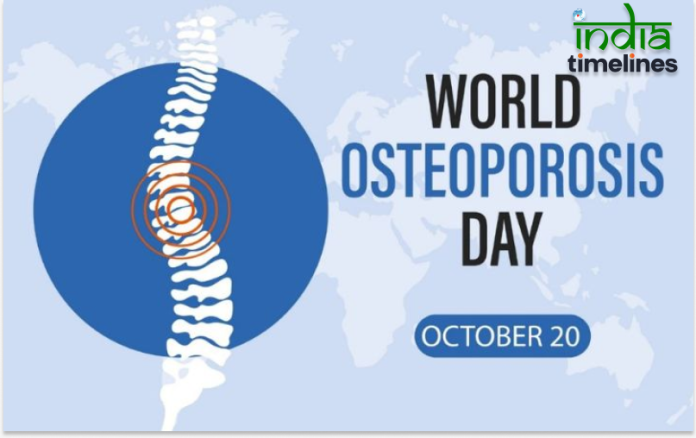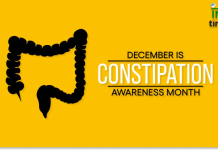
World Osteoporosis Day, celebrated every year on October 20th, is a global initiative to raise awareness about osteoporosis and bone health. Osteoporosis is a condition that weakens bones, making them fragile and more prone to fractures. This day serves as a reminder of the importance of prevention, early diagnosis, and treatment of osteoporosis to improve the quality of life of millions worldwide.
History of World Osteoporosis Day
World Osteoporosis Day was first launched by the United Kingdom’s National Osteoporosis Society in 1996. In 1997, it gained international attention when the International Osteoporosis Foundation (IOF) took the lead. Since then, the day has become a global event aimed at educating the public, health professionals, and policymakers about the impact of osteoporosis on society.
Objectives of World Osteoporosis Day
The primary goals of World Osteoporosis Day include:
- Raising Awareness: Educating people about the risk factors and consequences of osteoporosis.
- Promoting Prevention: Encouraging lifestyle changes to promote strong and healthy bones.
- Encouraging Early Diagnosis: Emphasizing the importance of bone density tests for those at risk.
- Supporting Research: Advocating for continued research on osteoporosis treatment and prevention.
What is Osteoporosis?
Osteoporosis is a bone disease that occurs when the body loses too much bone, makes too little bone, or both. This leads to weakened bones that can break easily, especially in the hips, spine, and wrists. Although osteoporosis affects both men and women, postmenopausal women are particularly at risk due to hormonal changes that accelerate bone loss.
Risk Factors for Osteoporosis
Several factors can increase the risk of developing osteoporosis:
- Age: As you age, bones become weaker and more fragile.
- Gender: Women, especially those post-menopause, are more susceptible.
- Family History: Genetics can play a role in determining your risk.
- Dietary Factors: Lack of calcium and vitamin D can weaken bones.
- Physical Inactivity: A sedentary lifestyle can contribute to bone loss.
- Smoking and Alcohol: These habits can interfere with the body’s ability to absorb calcium.
Importance of Bone Health
Bone health is vital for overall well-being. Strong bones provide structure, protect organs, and store essential minerals like calcium. Keeping bones healthy through proper nutrition, exercise, and lifestyle choices is critical in preventing osteoporosis and other bone-related conditions.
Themes of World Osteoporosis Day
Each year, World Osteoporosis Day focuses on a specific theme to highlight different aspects of osteoporosis prevention and care. The themes range from “Love Your Bones” to “Take Action for Bone Health,” each emphasizing proactive measures people can take to protect their bone health.
Global Campaigns and Participation
Countries around the world participate in World Osteoporosis Day by hosting events, educational seminars, health fairs, and screenings. Local hospitals, clinics, and health organizations often offer free bone density tests, workshops, and consultations with experts to help individuals understand their risk factors and preventive measures.
Role of the International Osteoporosis Foundation (IOF)
The IOF is the driving force behind World Osteoporosis Day, leading global efforts to educate the public about osteoporosis. Through their campaigns, the IOF provides educational materials, organizes events, and works with governments to ensure that bone health remains a priority in healthcare systems.
How to Prevent Osteoporosis
While osteoporosis can be a silent disease, prevention is key. Here are some steps to maintain strong bones and prevent bone loss:
- Maintain a Calcium-Rich Diet: Foods rich in calcium, such as dairy products, leafy greens, and fortified foods, are essential for bone health.
- Get Enough Vitamin D: Vitamin D helps the body absorb calcium. Sunlight and certain foods like fish and fortified milk are excellent sources of vitamin D.
- Exercise Regularly: Weight-bearing exercises, like walking, jogging, and strength training, help build and maintain bone density.
- Avoid Smoking and Excessive Alcohol: These habits can weaken bones and increase the risk of fractures.
- Get Regular Bone Density Tests: For those at risk, bone density tests can help detect osteoporosis early.
The Impact of Osteoporosis on Daily Life
Osteoporosis can have a significant impact on the quality of life. Fractures due to weakened bones can lead to chronic pain, loss of mobility, and even disability. Hip fractures, in particular, are associated with high mortality rates and long-term care needs. This is why early detection and preventive measures are so important.
Osteoporosis and Women’s Health
Osteoporosis is often considered a women’s health issue, as it primarily affects postmenopausal women. Estrogen plays a crucial role in maintaining bone density, and after menopause, the drop in estrogen levels accelerates bone loss. Women over the age of 50 are at higher risk of osteoporosis and should take extra precautions, such as getting regular bone density screenings and adopting a bone-healthy lifestyle.
Men and Osteoporosis
Although women are more commonly affected by osteoporosis, men are not immune to the disease. In fact, men over the age of 70 are at increased risk due to bone loss associated with aging and certain lifestyle factors. It is essential for men to also be aware of their bone health and take steps to prevent osteoporosis.
The Role of Nutrition in Bone Health
Good nutrition is fundamental to maintaining healthy bones. Besides calcium and vitamin D, other nutrients like magnesium, vitamin K, and phosphorus play a vital role in bone strength. Incorporating a well-balanced diet with plenty of fruits, vegetables, and whole grains is crucial in preventing bone-related issues.
Osteoporosis and the Elderly
The elderly are the most vulnerable group when it comes to osteoporosis. With age, bones naturally become more fragile, increasing the risk of fractures. Falls are a common concern among older adults, and those with osteoporosis are more likely to experience severe consequences from falls, such as broken hips or spinal fractures. Caregivers and family members must ensure that the elderly have a safe environment and receive proper medical care to manage osteoporosis.
Treatment Options for Osteoporosis
Treatment for osteoporosis typically focuses on slowing or stopping bone loss, improving bone density, and preventing fractures. Common treatment options include:
- Medications: Bisphosphonates, hormone replacement therapy, and calcium supplements are often prescribed to manage osteoporosis.
- Lifestyle Changes: Regular exercise, a balanced diet, and quitting smoking can significantly impact bone health.
- Physical Therapy: Strengthening exercises and balance training can help prevent falls and fractures.
India Time Lines
Conclusion
World Osteoporosis Day is a crucial reminder of the importance of bone health and the steps we can all take to prevent osteoporosis. By raising awareness, promoting prevention, and encouraging early diagnosis, we can reduce the impact of this silent disease on individuals and society. Let’s make bone health a priority for ourselves and future generations.
FAQs
1. What is the theme for World Osteoporosis Day 2024?
The theme for 2024 will be announced closer to the date, typically focusing on aspects of bone health and osteoporosis prevention.
2. How can I participate in World Osteoporosis Day?
You can participate by attending local awareness events, sharing information on social media, and encouraging friends and family to prioritize bone health.
3. Who is most at risk of developing osteoporosis?
Postmenopausal women, older adults, and individuals with a family history of osteoporosis are at higher risk of developing the disease.
4. Can osteoporosis be cured?
There is no cure for osteoporosis, but it can be managed with medication, lifestyle changes, and preventive measures to reduce the risk of fractures.
5. How often should I get a bone density test?
It is recommended that women over 50 and men over 70 get regular bone density tests. If you’re at higher risk, your doctor may suggest earlier or more frequent testing.





































toobit exchange